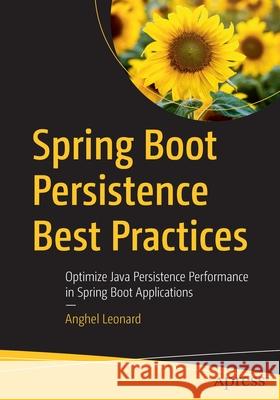Spring Boot Persistence Best Practices: Optimize Java Persistence Performance in Spring Boot Applications » książka
topmenu
Spring Boot Persistence Best Practices: Optimize Java Persistence Performance in Spring Boot Applications
ISBN-13: 9781484256251 / Angielski / Miękka / 2020 / 1027 str.
Spring Boot Persistence Best Practices: Optimize Java Persistence Performance in Spring Boot Applications
ISBN-13: 9781484256251 / Angielski / Miękka / 2020 / 1027 str.
cena 301,89
(netto: 287,51 VAT: 5%)
Najniższa cena z 30 dni: 289,13
(netto: 287,51 VAT: 5%)
Najniższa cena z 30 dni: 289,13
Termin realizacji zamówienia:
ok. 22 dni roboczych
Dostawa w 2026 r.
ok. 22 dni roboczych
Dostawa w 2026 r.
Darmowa dostawa!
Kategorie:
Kategorie BISAC:
Wydawca:
Apress
Język:
Angielski
ISBN-13:
9781484256251
Rok wydania:
2020
Ilość stron:
1027
Waga:
1.78 kg
Wymiary:
25.4 x 17.78 x 5.28
Oprawa:
Miękka
Wolumenów:
01
Dodatkowe informacje:
Wydanie ilustrowane











